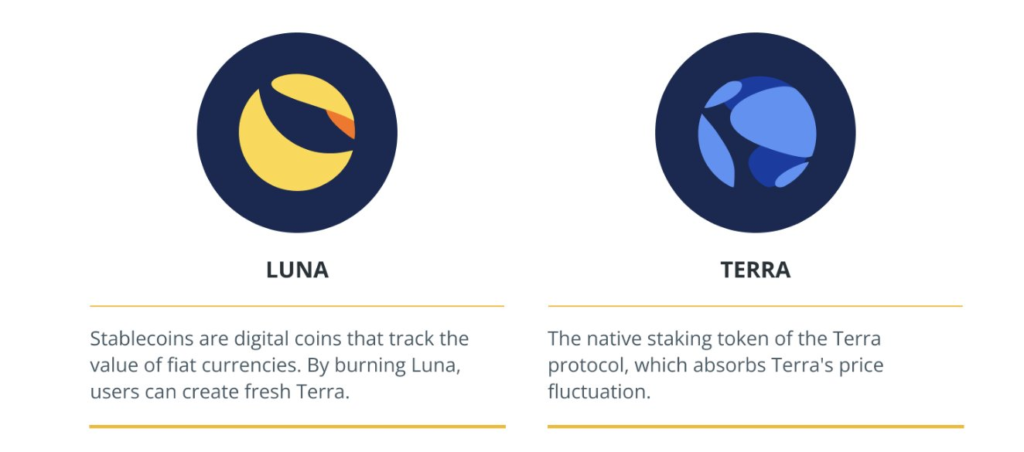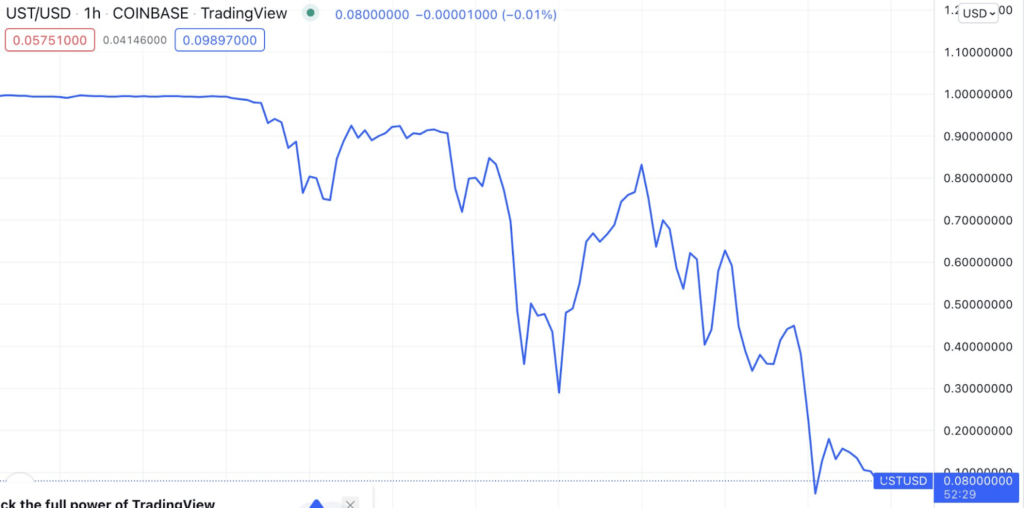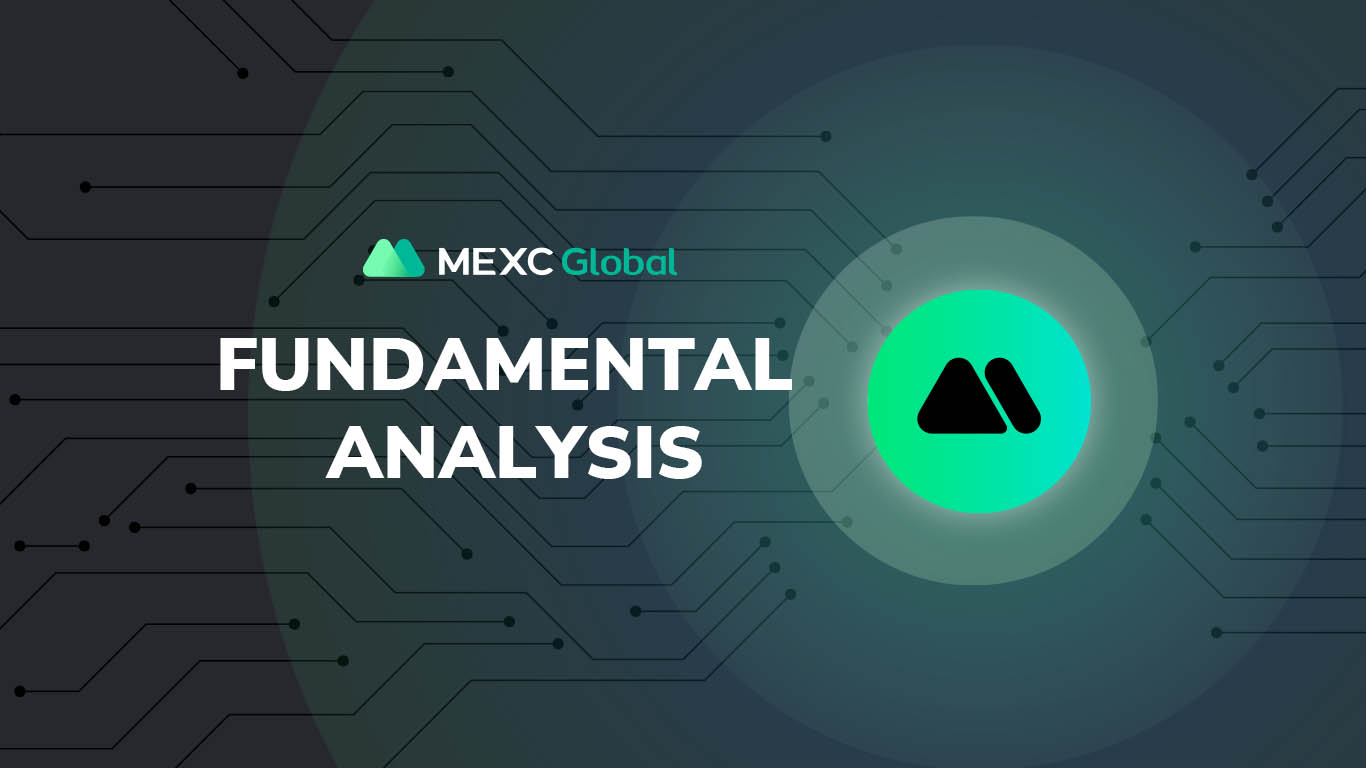In light of the most recent events of the blackswan event that happened to the Terra ecosystem, we will discuss the fundamental basics of understanding stablecoins.
Having a deeper understanding on stablecoins would enable you to make better informed decisions and gain knowledge into what actually caused the crash of LUNA and de-pegging of TerraUSD (UST).
At the end, we will review the future of the entire crypto industry’s future with stablecoins.
What are the use cases of Stablecoins?
A stablecoin is a token whose price is designed to remain fixed (pegged) to a certain value of an asset or other token. The price of most stablecoins are intended to be linked to the US dollar.
There are different types of stablecoins such as those pegged to other tokens; for example:
Why are stablecoins popular?
The main benefit is price stability. If you believe that cryptocurrencies might someday replace traditional money as a medium of exchange, then this point is fairly obvious.
However, the majority of people would not favour a currency that might dip 40% overnight. Stablecoins thus have some advantages against other cryptocurrencies (decentralization, ease of transfer, a transparent ledger, etc.), but they also hold a steady value.
Another common application is how they are used by traders and DeFi users to hedge their portfolio.
Furthermore, making a stablecoin liquidity pair allows you to earn rewards with less risk, acting as a hedge for the paired token. Stablecoin to stablecoin pairings also are popular which effectively reduces the risk of impermanent loss (if the peg is maintained), since the ratio between the two tokens is fixed. Thus, stablecoins are commonly accepted as collateral for lending and borrowing.
However, less risk, less reward. There are still risks associated with using crypto and DeFi applications that may not be obvious at first glance. Also, keep in mind, however, that the risks associated with each are decidedly different. Generally speaking, stablecoins are not insured in the same way that deposits in traditional banks are.
Stablecoins also act as a medium to onboard new users into crypto and act as a medium for fiat onramp.
How do stablecoins work?
There are 3 different types of stablecoins:
- Fiat-collateralized
- Crypto-collateralized
- Fractional-algorithmic
- Algorithmic/non-collateralized
Fiat-collateralized stablecoins
Fiat (e.g. government issued currency) is used as collateral to issue stablecoins. This method achieves stability of its issued stablecoin with a reserve basket of real world assets that equal to the amount of stablecoins issued.
Therefore, anyone could redeem that stablecoin for an equivalent amount of real dollars. Examples of this are USDC and USDT.
Crypto-collateralized stablecoins
Similar to the fiat-collateralized solution but using cryptocurrencies as the collateral.
Tokens are locked into smart contracts which then allows the protocol to issue stablecoins leveraging the collateral deposited. Examples of this are DAI by Maker DAO and MAI by mai.finance.
Algorithmic/non-collateralized stablecoins
Depends on algorithms to control the supply of the token in order to maintain a steady price. In the event where price is above peg, the protocol would increase the supply of the token and in the event that price falls below, the protocol would reduce the supply.
UST for example was designed to maintain its peg in relationship with another token, LUNA, which can be burned or minted by holders to maintain the price of UST. In this instance, the token is considered “algorithmic” because it does not rely on collateral to maintain its peg.
Towards the end before its recent downfall, the Luna Foundation Guard (LFG) decided to use Bitcoin (BTC) as collateral for backing UST. However this was the start of what became the most historic blackswan event in crypto’s history.
Fractional-algorithmic
A design that incorporates both collateralised and algorithmically based modals. Frax attempts to be the first stablecoin protocol to implement design principles of both to create a highly scalable, trustless, extremely stable, and ideologically pure on-chain money.
Using complex mechanisms, Frax balances between both ways to achieve increased stability, scalability and decentralization of its stablecoin.
What are the limitations of Stablecoins?
There are risks of de-pegging and lack of collateral liquidity. For stablecoins collateralized with fiat currency and real world assets, users have to trust the centralized entity that each stablecoin is backed closely 1:1 with a real world asset. Recent research and studies on USDT suggest that this risk may be more apparent that realized.
For algorithmic stablecoins, and/or stablecoins backed by cryptocurrencies, there are similar risks where a stablecoin can fall off its peg. Since these tokens maintain their value through collateral and user arbitrage provided by users of the token, some designs are vulnerable in events like “bank runs,” where everyone pulls their collateral at the same time can cause the price of the stablecoin to collapse or liquidity to run dry which was what caused the LUNA death spiral.
The LUNA death spiral:
Terra Luna is a Layer 1 blockchain that supports the adoption of UST. Terra’s goal was to create an ecosystem of decentralized apps similar to Ethereum, Fantom, Avalanche. What differentiated LUNA from other Layer 1 blockchains was the fact that their core platform created a stablecoin called UST.

So how did the death spiral start?
UST’s main utility was a huge 19.4% interest rate for its stablecoin deposits on Anchor protocol.. It was marketed as the “savings account” for DeFi. However, Terra would be cutting interest rates, leading to money flowing out of the system, leading to the 1 UST = $1 ‘peg’ breaking.
This caused the race from the Terra team to quickly find adoption for UST on other ecosystems and other chains. UST quickly was deployed and adopted in partnership with Wormhole (a bridging solution) to many prominent DeFi ecosystems such as Fantom, Avalanche, Polygon and Cronos.
There were also huge liquidity mining incentives to drive upward buy pressure and adoption for UST beyond the Terra ecosystem.
However their ecosystem adoption did not pan out as well as they hoped and the main utility of its high interest rewards on Anchor protocol began to reduce. Furthermore, the ability to swap large amounts of LUNA was broken–it was hard to swap over $100m of UST without meaningful price breakdown.
This would cause the death spiral of more and more LUNA getting minted and sold.
• If large amounts of capital want to exit UST
• They must exit at a discount
• They sell progressively more and more LUNA
• The $1 = 1 UST peg breaks
• This causes a reflexive death spiral with both LUNA and UST collapsing in price
Terra Luna did take a few safety measures as mentioned before:
• Buying BTC as a ‘backstop’ to hold value
• Integrating with the Curve ecosystem
• Making
But on 7th May, UST slightly depegged down to 98 cents as several $100 million was pulled out. But the next leg came later, as more UST was pulled out on crypto exchange Binance and decentralized exchange Curve. The BTC backstop came out, and trading firms backing LUNA used capital to defend the peg. They attempted to keep the peg, but it did not last.

In addition, UST market cap crossed below total LUNA market cap, this shook confidence of all investors and adopters of UST.
Thus it happened: The only solution based on its algorithmic design was to continue hyperinflating token supply to absorb UST exit liquidity. Luna prices fell to single digits in a few hours and continue to fall into the decimals.
The Future of stablecoins
Due to these events, the confidence of both retail and institutional investors on the Terra ecosystem has plummeted. Its effect caused cascading liquidations across all DeFi ecosystems. This was further fueled by the general market downturn.
Those most affected were the users borrowing against their LUNA on Anchor protocol having been both affected by LUNA and UST prices. Furthermore, protocols on the Terra ecosystem such as Astroport, White Whale, Kujira are essentially left to pick up the dust, or whatever resemblance of it remains.
These were amongst many promising protocols with talented developers behind them. It is a real shame that their operations and business are now completely erased due to the shortcomings of UST. Not only that, many lending and borrowing protocols are affected with exploits, attacks and bad debt due to Chain Link pausing oracle price feeds for UST at 10 cents causing Blizz Finance (amongst other protocols) to suffer bad debt as users borrow against the defunct asset.
In light of this, builders and the crypto industry have been shaken and now are highly skeptical of the other stablecoins not just the algorithmic ones. The future of stablecoins remains bleak however there are a few considerations moving forward that could be considered.
- Moving dependency off stablecoins into Bitcoin
- Diversifying stablecoin reserves
Stablecoins still remain the future for adoption of crypto as they provide a hedge against the natural volatility of cryptocurrency. However, all these events show that the crypto industry is still in its early stages and infancy. The growth potential is huge and crypto is only just getting started. There are still gems to be found and many projects are out there revolutionizing the way we do things everyday with new cutting edge innovations with blockchain technology.
Join MEXC and Get up to $10,000 Bonus!
Sign Up


